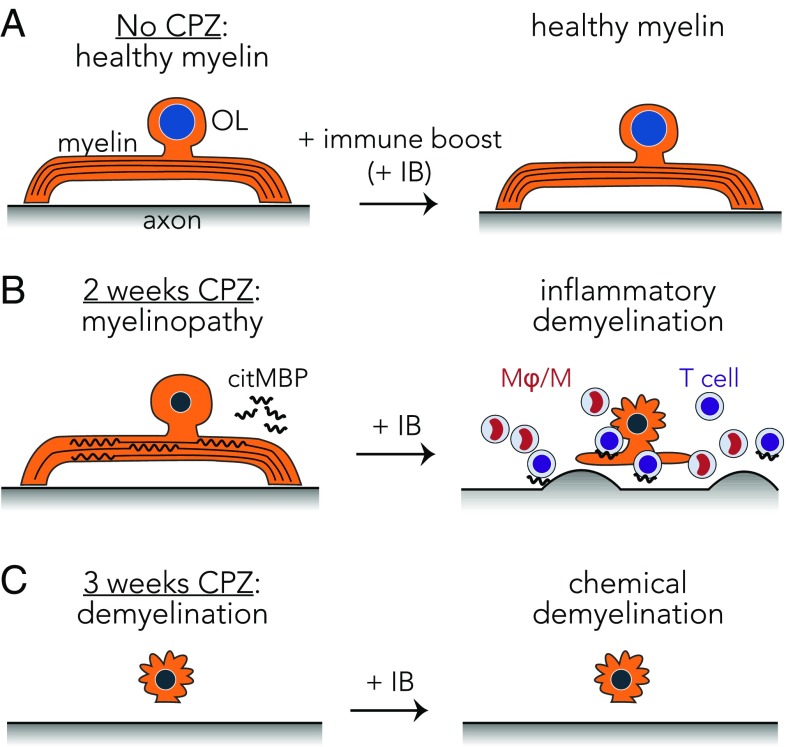Fig. 5.
CAE elucidates a molecular pathway through which biochemically altered myelin triggers autoimmune demyelination in mouse. (A) With intact myelin, immune boost (IB) alone had little effect. (B) In stark contrast, an abbreviated, subdemyelinating cuprizone (CPZ) treatment induced a subtle biochemical myelinopathy [likely including citrullinated MBP (citMBP)] that, when followed by IB, secondarily triggered severe inflammatory demyelination. Such lesions are populated by citrullinated myelin-reactive innate [macrophages/microglia (Mφ/M)] and adaptive (T lymphocytes) immune cells, that drive severe demyelination and secondary and bystander axonal degeneration. (C) Paradoxically, IB administered after an overtly demyelinating 3-wk course of CPZ, with associated clearance of myelin antigens, had no effect. Only the combination of subtle biochemical myelin pathology together with appropriately timed immune stimulation, triggered brisk inflammatory demyelinating lesions similar to those found in MS.

